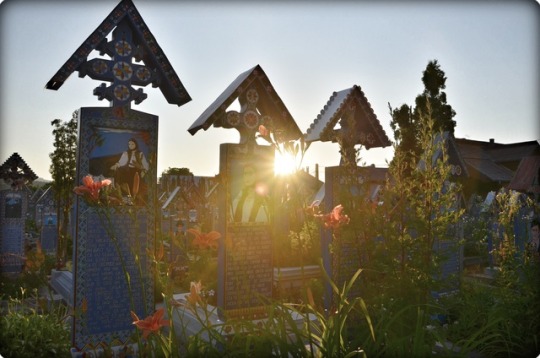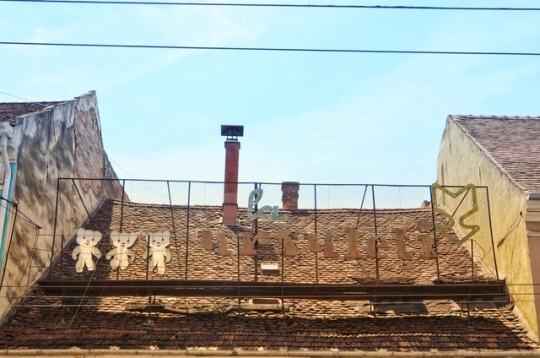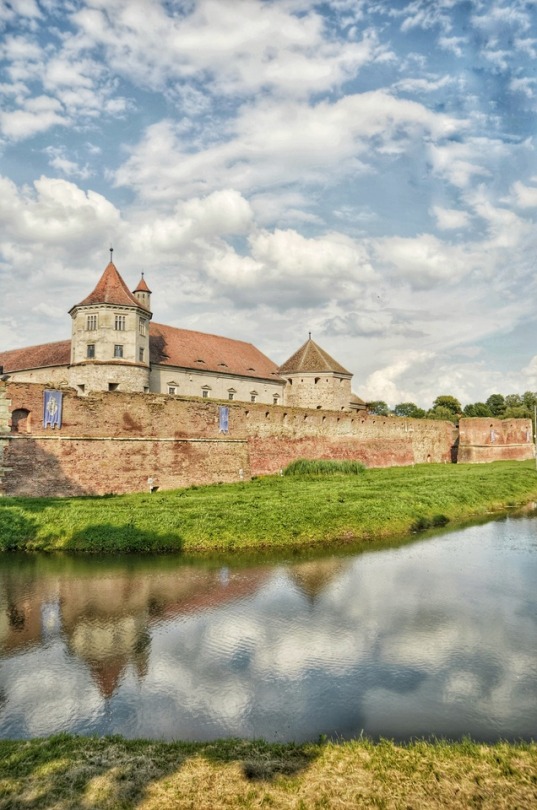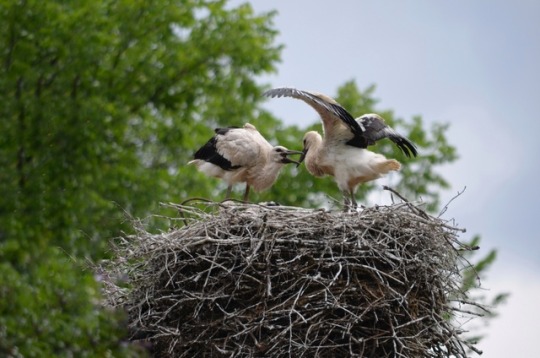#Fagaras Castle
Text
Făgăraș Fortress, Transylvania
Built in 1310. on the site of a former 12th century wooden fortress, burned by the Tartars in 1241, Fagaras was enlarged between the 15th and 17th centuries when it was considered one of the strongest fortifications in Transylvania. The fortress is surrounded by two rows of walls, the space between them being filled with earth; the result is one sturdy eight-meter thick wall.
The fortress was surrounded by a deep moat which, in times of war or social unrest, could easily be filled with water from a nearby mountain brook, which is why it has never been conquered. A bridge over the moat provided the only access point. The fortress boasts strong defending walss and five watch towers. All armed attacks on the fortress were unsuccessful, its eventual downfall coming as a result of inside treason.
#romania#transylvania#fagaras#fortress#citadel#medieval castle#medieval core#never#conquered#drone videography#aesthetic#architecture#fortifications#defensive#history#video post#thick#walls#surrounded#water
15 notes
·
View notes
Text
Road Less Traveled: Unconventional Road Trips
Embarking on a road trip is a classic adventure that allows travelers to explore diverse landscapes, discover hidden gems, and create lasting memories. While popular routes like Route 66 and the Pacific Coast Highway are well-known, there’s a charm in taking the road less traveled. Here are some unconventional road trips that promise unique experiences:
1. Dalton Highway, Alaska:
For those seeking an Arctic adventure, the Dalton Highway in Alaska is an unconventional choice. Stretching over 400 miles, this route takes you through breathtaking wilderness, permafrost landscapes, and offers views of the Northern Lights during the winter months. Be prepared for challenging road conditions and limited services.
2. North Coast 500, Scotland:
Scotland’s North Coast 500 is a relatively new but increasingly popular route that takes you through the rugged and picturesque Scottish Highlands. With castles, coastal cliffs, and charming villages along the way, this road trip offers a perfect blend of history and natural beauty.
3. Transfagarasan Highway, Romania:
Known as one of the most scenic drives in the world, the Transfagarasan Highway winds through the Carpathian Mountains in Romania. This serpentine road takes you to the top of the Fagaras Mountains, offering stunning views of valleys, lakes, and the Vidraru Dam.
4. The Great Ocean Road, Australia:
While the Great Ocean Road in Australia is not exactly unknown, it still provides a unique coastal experience. Stretching along the southeastern coast, it offers breathtaking views of the Southern Ocean, the Twelve Apostles rock formations, and lush rainforests.
5. Tianmen Mountain Road, China:
For thrill-seekers, the Tianmen Mountain Road in China offers an exhilarating journey. Known as the “Dragon Road,” it features 99 hairpin turns as it ascends the Tianmen Mountain. The road leads to the Tianmen Cave, a natural arch in the mountain.
6. The Atlas Mountain Circuit, Morocco:
Explore the diverse landscapes of Morocco by taking a road trip through the Atlas Mountains. From bustling markets to ancient kasbahs and scenic deserts, this journey provides a glimpse into the rich culture and history of Morocco.
7. The Big Island Circuit, Hawaii:
Hawaii’s Big Island offers a unique road trip experience, taking you through diverse climates and landscapes. From lush rainforests to volcanic craters and black sand beaches, this circuit captures the essence of Hawaii’s natural beauty.
8. The Pan-American Highway, North to South:
The Pan-American Highway is one of the longest road systems in the world, connecting Alaska to Tierra del Fuego in Argentina. This epic journey spans diverse cultures, climates, and terrains, offering a once-in-a-lifetime adventure.
9. The Fairy-Tale Route, Germany:
Experience the enchanting side of Germany by driving the Fairy-Tale Route (Märchenstraße). This route takes you through charming towns and landscapes associated with the Brothers Grimm fairy tales, such as Cinderella’s Castle and Sleeping Beauty’s Castle.
10. The Icefields Parkway, Canada:
sqlCopy code- Connecting Jasper National Park to Banff National Park, the Icefields Parkway in Canada offers stunning mountain vistas, glaciers, and turquoise lakes. Wildlife sightings are common along this picturesque route.
Before embarking on any unconventional road trip, it’s essential to research road conditions, plan for remote areas, and ensure your vehicle is suitable for the journey. Whether you’re drawn to the icy landscapes of Alaska or the fairy-tale settings in Germany, these road less traveled adventures promise a unique and unforgettable experience.
0 notes
Text
Thoughts on the assessment
My first idea is a reconstruction of an artifact from the Classical Bronze Age Wietenberg culture. The artifact is thought to be a votive chariot (we'll call this Chariot A). I first encountered it in 2016 at the offices of the Museum of Dacian and Roman Civilization in Deva, and I've never wanted to pocket an artifact so badly. I told my dig director about it when I returned to site and asked him if he thought they'd let me scan it. I'd never scanned anything, mind, but I knew one could. He said they'd never let me, so of course after that I had to. I arranged to spend a couple weeks at the museum doing thesis work in 2019, and of course that work was to 3D scan and photogrammetrically model three objects. Naturally, the votive chariot was one I had in mind. I was allowed to model it without question, and at the same time I was shown a second one (Chariot B). They were very similar, but Chariot A was obviously better made. Unfortunately, they were both fragments. I was told that they had come from two different sites about 10 kilometers apart, and that while other Wietenberg votive chariots had been found--some were even intact--these were the only two in this shape that had ever been found. I modeled both, of course (as well as 18 other items, as the more the museum staff watched me the more artifacts they produced for modeling). I intended to digitally reconstruct Chariot A, but unfortunately that one was even more fragmented than Chariot B and I couldn't determine anything from what was left of it to postulate about what it might have looked like intact. There was much more left of Chariot B, and when I looked at the bottom of this one I was able to identify the midpoint. I had seen images of the intact chariots, and they were symmetrical and all of a similar size, so once I had identified the midpoint a reconstruction was easy. I imported the model into Blender, copied and mirrored it, and joined the copy to the original model. The result was fairly crude, but I did present my digital reconstruction of Chariot B as part of my thesis. I did nothing with the model of Chariot A, but now that I had a better idea of what I was doing I intended to go back for a second look. I finally revisited my model of Chariot A in late 2022, and after about 10 minutes I was able to identify the midpoint--as well as some smaller details I had previously missed. I did a mental reconstruction immediately, and proceeded to work on a two-dimensional one in GIMP. As there was much less of Chariot A, though, I knew I would also need some 3D modeling skills to do a full reconstruction. I would very much like to finally do a digital reconstruction of Chariot A.
My second idea is a castle purse frame, in the style of those from the Renaissance that the Metropolitan Museum of Art and the V & A have in their collections. I've been building chain mail purses onto vintage or antique frames since 2016, and when I first saw these I naturally coveted them. Given their age and rarity, however, I am unlikely ever to get my hands on one. Furthermore, if I did I would doubtlessly be unable to sell the result--a problem I have had with all the purses I have made thus far--and so it would behoove me to make my own instead. Naturally my first thought was to create a series of castle purse frames based off Romanian castles (Corvin, Fagaras, Poenari, Neamts, Cetatea de Colt, and of course Bran). I went so far as to do a rough sketch of a frame in this style based on the architecture of Corvin. I do not remotely have the skill to fabricate one, as the artisans in the Renaissance did, but it would be theoretically possible for me to create one in a 3D modeling program and have it printed in resin for casting. Unfortunately, as I currently have no 3D modeling skills this idea has been put on the back burner. It would be very nice to realize it at some point.
The second idea led me to a third, which is the one most consistent with the assessment brief. Those castle purse frames (links in a previous post) look an awful lot like they're suspended on an arch. In Garth Nix's Lirael he describes the town of High Bridge, which looks much like London Bridge must have looked during the period when those purse frames were made. However, the town of High Bridge is constructed, not on a man-made bridge, but on a massive natural rock arch between two cliffs over a river gorge. Given my interest in abandoned places and improbable architecture, an abandoned High Bridge (or a town like it) seems a natural direction for the final assessment. In thinking about this I was reminded of Meteora, the Swallow's Nest, and Tatev Monastery in Armenia (I posted previously on all of these). I was also reminded, of course, of Arches National Park in the United States--and other national parks in the American Southwest. None of this is truly fantastic, but the idea does take improbable but real architecture and extends it one step farther into something that theoretically could, but does not actually exist. (At least, as far as I am aware.)
0 notes
Text
Top 5 Reasons To Spend Your Holidays In Transylvania

Are you looking for a “not so commercial….out of the box” holiday destination this year? Look no further than Transylvania! Most people think that transelvania is a fictional place, but make no mistake about it, this central Romanian region is a real place. And yes…it is the home to the world famous vampire “Dracula”
With its stunning landscapes, exciting attractions, and captivating culture, it's actually quiet a surprise that Transylvania is not as popular as the other main stream holiday experiences. In this blog post, we'll take a look at the top five reasons why spending your holidays in Transylvania is the perfect choice for you. So grab your passport and get ready to explore the breathtaking beauty of Transylvania!
The Landscape
If you are looking for a unique and unforgettable holiday experience, then Transylvania is the place to be. From the mysterious forests, to the stunning alpine lakes and snow-capped mountains, Transylvania's heavenly natural beauty will leave you god smacked. If you like to get out in nature and explore, then there is no other better place than this central region of Romania! You can hike up into the mountains, take a boat ride at Bare lake, or just wander through the lush forests.

The Fagaras Mountains provide spectacular views from any direction and are perfect for outdoor adventure lovers. There are numerous trails and paths that can take you to some of the most remote areas in the region, or you can just sit back and enjoy the gorgeous views of the region. The landscapes are so varied that you could never get bored of exploring them!
2) The Culture
Transalvania is mostly associated with the horror character Dracula (the first vampire) & the gothic style of dressing.

For those wondering if Dracula actually existed…then the answer is NO 😊 !! Vlad Dracula (1448-1476) was a actually a ruthless transalvanian king who indulged in bizarre habits like drinking human blood and dressing up in full black. In 1897 came along famous Novelist Bram Stoker who created a horror novel character…..based on King Vlad (and even gave his novel the kings name “DRACULA”)….. and that’s how the concept of Dracula & vampires was born]
Till date the castle of Vlad Dracula (Bran Castle) is a famous tourist attraction, that is visited by all vacationing in Transylvania.
Apart from this…..Transylvania has a long and fascinating history that has helped to create the culture that exists there today. Visitors to the region can experience a variety of traditional customs, many of which are still practiced in some villages. From folk festivals, to artisans and craftspeople, to castles and ruins, there is no shortage of things to experience in this fascinating place
One of the most celebrated cultural events of the region is the “Taste Of Transylvanian Food Festival”. This annual event is hosted in one of Transylvania’s many beautiful villages and includes live music, dancing, traditional costume displays, and lots and lots of food. The festival is mainly hosted by restaurateurs & chefs of Romania, and is visited by thousands of people from Europe and the world alike.
Another unique aspect of Transylvania’s culture is its artisanal crafts. Many artisans in the region specialize in traditional hand-made items such as jewelry, pottery, and textiles. While visiting Transylvania, be sure to purchase some of these authentic crafts that you can take home with you.
For instance…Viscri is a small village in the region, that mostly comprises of a female artisanal community which specializes in handcrafts knitted clothing and decorations, using techniques passed on by generations of village elders.
The Transylvania community is also extremely welcoming and friendly. It is common for visitors to be invited into locals’ homes for dinner or coffee and many locals are more than willing to share their stories and customs with outsiders.
If you’re looking to explore a different culture and make memories that will last a lifetime, then spending your holidays in Transylvania should definitely be at the top of your list!
3) The People
Transylvania is known for its friendly, welcoming people who are eager to show visitors the best of their culture. The locals take great pride in their heritage and have a deep appreciation for the land they call home. In the villages, you'll find folks engaged in traditional activities like farming, carpentry, and woodcarving, and enjoy a vibrant social life with friends and family.

When it comes to hospitality, the people of Transylvania don’t hold back. Their warmth and generosity is unparalleled, and they will make sure you feel right at home. Whether you’re looking to explore the countryside or get to know the locals better, you’ll find yourself embraced by the people of Transylvania with open arms. It’s no wonder why so many people come back year after year!
4) The History
Transylvania has a long and fascinating history. It dates back to the Iron Age when the area was populated by the Dacian people. During the Middle Ages, it became part of the Kingdom of Hungary and was later annexed to the Ottoman Empire in the 16th century. In the 19th century, Transylvania was part of the Austro-Hungarian Empire until World War I. After the war, it was ceded to Romania.
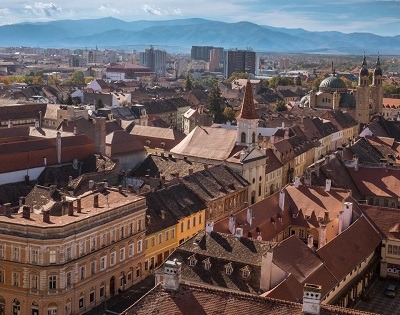
Today, Transylvania is home to a diverse population that includes Romanians, Hungarians, Germans, and Roma (Gypsies). As you travel through the region, you’ll see plenty of evidence of its varied past. You can explore the castles, monasteries, churches, and fortresses that have stood for centuries and take in the rich cultural heritage of the area.
From its early beginnings to its modern-day transformation, Transylvania’s history is rich and captivating. The area is filled with a variety of stories, traditions, and customs that provide visitors with an in-depth look into a unique culture.
5) The Food
When it comes to cuisine, Transylvania offers an abundance of delicious and unique dishes that will tantalize your taste buds.
From Romanian dishes like Sarmale (cabbage rolls stuffed with pork, beef, and rice) to traditional Hungarian specialties like Langos (deep-fried flatbread topped with sour cream and cheese), you’ll find something to suit any palette.

Additionally, the region boasts some of the best wine in Eastern Europe, as well as a variety of locally produced cheeses and meats. In the summer months, you can also sample an array of fresh fruits and vegetables, while in the winter, hearty stews and soups are sure to warm you up.
No matter what time of year you decide to visit Transylvania, be sure to sample as much of the local cuisine as you can – it's sure to delight!
Conclusion:
Transylvania offers an amazing experience, with plenty of activities and attractions to explore. There is something for everyone in this fascinating region of Romania. Explore its beautiful mountains, visit its medieval towns and century old castles…and most of all don’t forget to visit the world famous Bran Castle ( Home of Dracula )
As for every vacation, always remember to plan your vacation wisely, and once at your destination always remain alert, street smart and most of all…don’t forget to “HAVE FUN”…😊
View the original post @ https://tripruby.com/the-top-5-reasons-to-spend-your-holidays-in-transylvania/
To book cheap & discounted hotels in Transylvania: Visit our HOME PAGE : Compare Prices Of over 1000+ Hotels In Transylvania.
Book Your Vacation With tripruby.com : Get UPTO 70% Of On Hotel Bookings !!
#Holidays In Transylvania#Transylvania#budgettravel#europe#wanderer#roadtrip#tourist#tourism#trip#traveltips#explore#beachtravel#beachholiday#wander#travelbug#adventure#hiking#sunset#beach#luxury#hotels#cheaphotels#travelusa#eurotrip#travelphoto#traveldiaries
0 notes
Text
The Iron Maiden of Fagaras Castle
Rocking the modern perceptions of the #MiddleAges, the Iron Maiden found at Fagaras #Castle, #Romania, is a medieval torture device that is real, and yet not. #medieval #history #travelphotography #IB6 #castle
Rocking the modern perceptions of the Middle Ages, the Iron Maiden found at Fagaras Castle, Romania, is a medieval torture device that is real, and yet not.
The stone castle of Făgăraş was first mentioned (that we know of) in 1455, but the initial fortification, built with sturdy fir trees from the nearby forests, goes back to 12th – beginning of the 13th century.
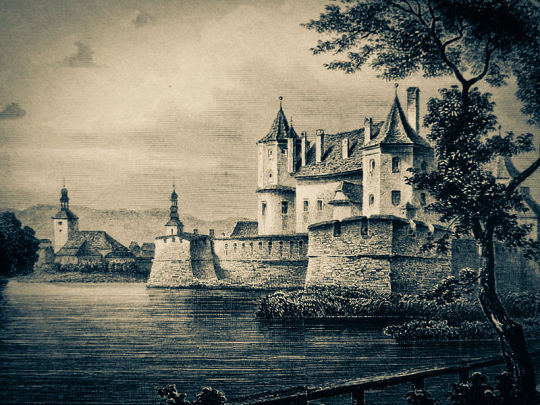
Engraving of the Făgăraș…
View On WordPress
#Almas si Fagaras#castles of Romania#Cettea Mihai Viteazul#Fagaras Castle#Hunyadi si Vlad Tepes#Iron Maiden#medieval torture#stories of the middle ages#thursday doors#violence during middle ages#what is an iro maiden
0 notes
Text
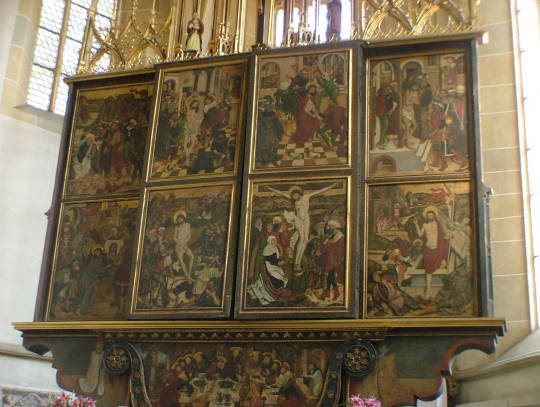

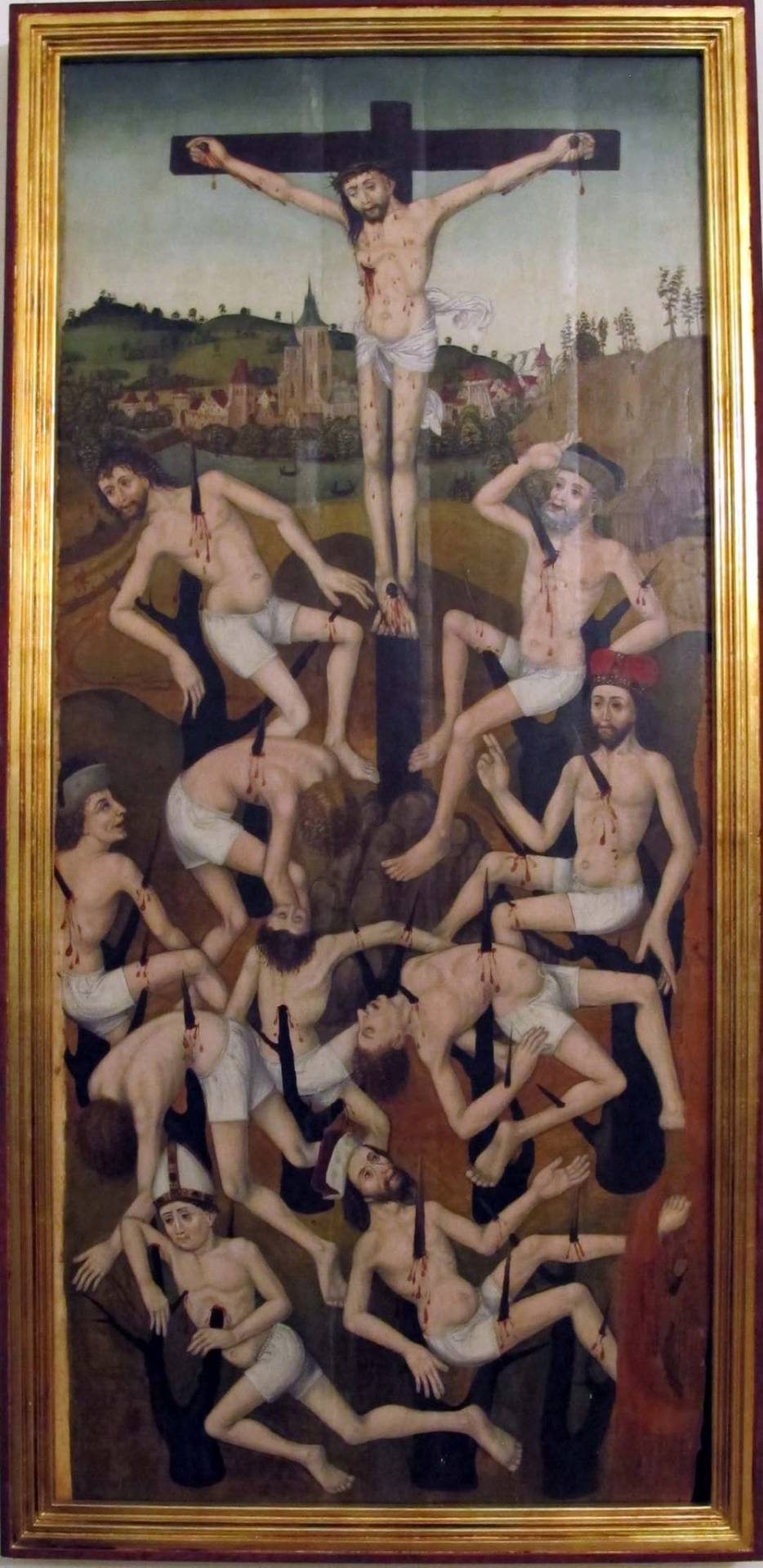
"Crypto-portrait" of Vlad the voivode from the temple in Tarnava, Sibiu II.
"Martyrdom of Ten Thousand Christians."
According to the article "Dracula in Hermannstadt? Der Großprobstdorfer Flügelaltar, die Pest und die" Dracula-Kryptoporträts ".
"Martyrdom of Ten Thousand Christians."
In the painting the martyrdom of ten thousand Christians, which depicts the martyrs impaled on thorns, the headdresses of the depicted are also interesting, speaking about the position they occupied during their lifetime. Despite the fact that they are almost naked, only bré, the artist left hats on them, probably trying to indicate who they were trying to portray as martyrs. Three of the martyrs wear hats trimmed with fur, which speaks of their high position, zhupans, boyars, merchants from the guilds, one in a headdress made of red velvet with precious stones, similar to the king's headdress. The artist tried to make this figure similar to Christ and depicted him with a two-fingered finger, as a sign of blessing. And the figure in the corner is depicted in a miter, which says that something is a clergyman, a bishop, but they have no beard. There is an assumption that these headdresses in a number of similar images are simply mixed up in places, as in this image. The king is below without a beard, and above is a bishop with a two-fingered finger. There are assumptions that Akaki himself is depicted in the image of the bishop.
The background, city, river, fishing boats are also interesting here. The author of the article notes that from the north the pictures are clearly distinguishable Fagaras mountains. The author of the article notes that the background of the picture is very similar to the picture of the crucifixion from Medias, saying that there is no doubt that it is the Transylvanian landscape that is depicted in the background. By the way, it is worth noting that the image "The Martyrdom of Ten Thousand Christians" is also on the walls of the Church of St. Margaret in Medias.
The Martyrdom of Saint Sebastian.
Speaking of another depiction, the Martyrdom of Saint Sebastian, the motive itself, outside the altar, is quite popular. The painting depicts Sebastian himself, tied to a tree, on the left there are two arrows, and five observers. A kind of Asian-Mongolian appearance of the shooters' faces, as well as recursive characteristic bows, a topic that is not so rare, a kind of tribute to the memory of past aggressors.
Sebastian's hands, raised up above his head and tied there, as well as feet superimposed on one another, right to left, indicate that the artist tried to connect as much as possible the image of the martyr with the image of Christ depicted in the painting from Medias, his head is bowed in the same side and the bandage is tied on the left and develops in the same direction as in the picture. It is also interesting that two figures, often present in the images of the same plane from Mediaash, are also present in this image - the figures of Pilate and Caiaphas among the observers. Here Pilate is depicted gray-haired and dressed in the Eastern fashion, holding a scepter in his right hand. Pilate acts here as the emperor Diocletian, who tortured and killed Saint Sebestyan. Less obvious, the author of the article writes, is the connection between Caiaphas and the second figure in the painting The Martyrdom of Saint Sebastian. Assumptions are based on the presence of a standard set of figures in similar paintings. The city and the reservoir are also visible in the background; no attempts were made to identify the depicted city. To say that, judging by the simple church bell tower right behind the tower, the author believes that it might be a view of Medias would be too soon. But a building that looks like a fortress or a castle on a dais in the background is also interesting in this context. This building, according to the author, is most likely a fortified church. The gate of the tower with defensive walls, a massive square bell tower are clearly visible. The image resembles the churches - fortresses of Tyrnava - Boyan,
Fraundorf and Valea Viilor.
When asked why these two paintings are presented on the altar together, so far no one has been able to answer. What will unite these two themes is that both are presented side by side on the altar. The author of the article believes that the answer can be found in the pamphlets of that period, printed and distributed in the last quarter of the 15th century. I mean a number of pamphlets, leaflets about the plague. Similar pamphlets depicting the torment of Saint Sebastian were circulated even in Nuremberg, for example, pamphlets by the artist Gantz Paur, circa 1472. These pamphlets also depict Saint Sebastian, only three shooters, and two observers. These pamphlets contained prayers that helped people get through difficult times and feel supported. Such leaflets were even betrayed the meaning of a talisman against the plague. Another similar pamphlet was found in southern Germany, dating from around 1500. Here, the images take up only a quarter of a sheet. The rest is reserved for text. Here is not only prayer, but also practical notes on the fight against the plague. On this pamphlet, the painting has two parts: on the left side, Saint Sebastian, three shooters, and from the observers, the emperor Diocletian is again presented in the form of a bearded gentleman in oriental clothes with a scepter in his hand. Again, there are similarities with the altar from Tyrnava. On the right side of the pamphlet depicts
RU:
«Крипто-портрет» Влада воеводы из храма в Тырнава, Сибиу II.
«Мученичество десяти тысяч христиан».
По статье "Dracula in Hermannstadt? Der Großprobstdorfer Flügelaltar, die Pest und die „Dracula-Kryptoporträts“.
«Мученичество десяти тысяч христиан».
На картине мученичество десяти тысяч христиан , где изображены мученики , насаженные на шипы, интересны также и головные уборы изображенных, говорящих о занимаемой ими при жизни позиции. При том, что они почти голые, только брэ, художник оставил на них головные уборы, вероятно, пытаясь указать на то, кого они пытался изобразить в роли мучеников. Трое из мучеников носят шапки, отделанные мехом, что говорит об их высоком положении, жупаны, бояре, купцы из гильдий, один в головном уборе из красного бархата с драгоценными камнями, схоже с головным убором короля. Эту фигуру художник постарался сделать схожей с Христом и изобразил у него двуперстное перстосложение, как знак благословения. А фигура в углу изображена в митре , что говорит, что то - священнослужитель, епископ, но они при чем без бороды. Существует предположение, что данные головные уборы на ряде сходных изображений просто перепутаны местами, как и на этом изображении. Король снизу без бороды, а вверху епископ с двуперстным перстосложением. Существуют предположения, то в образе епископа изображен сам Акакий.
Интересен здесь и фон, город, река, рыболовные лодки. Автор статьи отмечает, что с севера картины явно отличимые горы Фэгэраш. Автор стати отмечает, что фон картины очень схож с картиной распятия из Медиаша, говоря, что нет сомнений, что на фоне изображен именно трансильванский ландшафт. Кстати, стоит отметить, что изображение «Мученичество десяти тысяч христиан» также имеется на стенах церкви святой Маргариты в Медиаш.
«Мученичество святого Себастьяна».
Говоря о другого изображении, Мученичество святого Себастьяна, сам по себе мотив, вне алтаря , довольно популярен. На картине изображен сам Себастьян, привязанный к дереву, слева два стрелка, и пятеро наблюдателей. Своего рода азиатско-монгольский вид лиц стрелков, а также рекурсивные характерные луки, тема , встречающаяся не так редко, своего рода дань памяти прошлым агрессорам.
Руки Себастьяна, поднятые вверх над головой и там завязанные ,а также стопы, наложенные одна на другую, правая на левую, говорят о том, что художник пытался максимально связать образ мученика с образом Христа, изображенного на картине из Медиаша, голова склонена в ту же сторону и повязка завязана слева и развивается в ту же сторону, что на картине. Также интересно и то, что две фигуры, часто присутствующие на изображениях того же плана из
Медиаша, также присутствуют на данном изображении – фигуры Пилата и Каиафа среди наблюдателей. Здесь Пилат изображен седым и одет н восточный лад, держа скипетр в правой руке. Пилат выступает здесь в качестве императора Диоклетиана, мучившего и убившего святого Себестьяна. Менее очевидна, пишет автор статьи, связь Каиафы и второй фигуры на картине «Мученичество святого Себастьяна». Предположения основаны на присутствии стандартного ряда фигур на подобных картинах. На фоне также виден город и водоем, попыток идентифицировать изображаемый город не предпринималось. Сказать, что , судя по простой церковной колокольне прямо за башней, автор полагает, что то может быть вид на Медиаш, было бы слишком скоро. А вот здание, похожее на крепость или замок на возвышении на фоне также интересен в данном контексте. Данное сооружение, по мнению автора, является, скорее всего, церковью-крепостью. Хорошо видны ворота башни с оборонительными стенами , массивная квадратная колокольня. Изображение напоминает церкви – крепости Тырнава – Боян, Фраундорф и Валеа Виилор.
На вопрос , почему же эти две картины представлены на алтаре вместе, пока никто не смог ответить. Что объединят эти две темы, что обе представлены рядом н алтаре. Автор стать считает, что ответ можно найти в памфлетах того периода, печатавшихся и распространявшихся в последней четверти 15 века. Имеется ввиду ряд памфлетов, листовок о чуме. Подобные памфлеты , с изображением мучений святого Себастьяна ходили даже в Нюрнберге, например памфлеты художника Ганца Паура, приблизительно 1472 года. На этих памфлетах также изображен святой Себастьян, только стрелков трое, а наблюдателей двое. Такие памфлеты содержали молитвы, которые помогали людям пережить тяжелые времена , чувствовать поддержку. Таким листовкам предавали даже значение оберега от чумы. Еще один схожий памфлет был найден на юге Германии, датировался приблизительно 1500 годом. Здесь изображения занимаешь лишь четверть листа. Остальное отведено под текст. Здесь уже не только молитва, но и практические заметки по борьбе с чумой. На этом памфлете картина имеет две части: с левой стороны святой Себастьян, трое стрелков , а из наблюдателей император Диоклетиан , снова представлен в образе бородатого господина в восточных одеждах со скипетром в руке. И снова здесь просматриваются сходства с алтарем из Тырнава. На правой стороне памфлета изображено мученичество десяти тысяч христиан , только без распятия. То есть на данном памфлете оба изображения, которые присутствуют на алтаре храма Тырнава. Выходит, Себастьян ассоциировался с тем святым, который помогал людям во время чумы. Предположительно, страдания христиан, изображенные на картине «Мученичество тысячи христиан» также связанны со страданиями от болезни. А шипы символизируют чуму, проникающую в тело, как острие. Это может объяснить присутствие данных изображений на алтаре вместе. Данный вывод приобретает смысл, учитывая то, что в Трансильвании в 1510\11 была вспышка чумы, о чем встречаются записи, особенно о Сибиу.
Подобный вывод подтверждает то, что не только дата создания изображений была поставлена верно, но и то , почему два нетипичных для алтаря изображения были помещены в тот период в храме.
Вот , примерно, к таким выводам пришел автор статьи касаемо данных изображений. Осталось рассмотреть вопрос о том, может ли изображение одного из наблюдателей быть крипто-портретом Влада воеводы.
Среди изображений представлен также алтарь храма святой Маргариты в Медиаш.
#Google Translated#vlad the impaler#Vlad Dracula#Vlad Tepes#history#wallachia#romania#portrait#Valuable portraits of Vlad Tepes
9 notes
·
View notes
Photo

Fagaras Castle,
Fagaras, Brazov County, Romania.
www.castlesandmanorhouses.com
In 1696, following penetration of the Austrian army in Transylvania, Fagaras Castle (or Fagaras Fortress) became Crown property of the Habsburgs.
56 notes
·
View notes
Photo
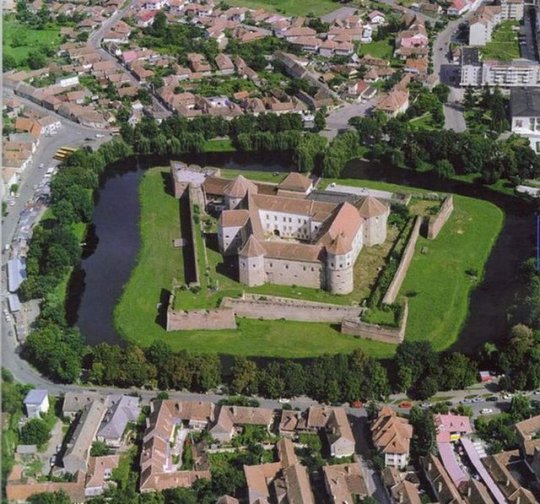
Castle Fagaras - Romania #travel #beautiful #viajes #vacaciones #vacations #photo #peru #Blog #viajeros
2 notes
·
View notes
Photo
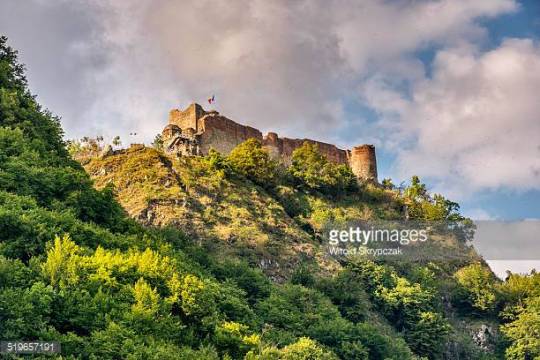
12-25 Cetatea Poenari, Poenari Castle, 13th century, on cliff above Transfagarashan Road, Fagaras Mountains in Southern Carpathians (Transylvanian Alps), near Arefu, Arges County, Romania. #arefu http://dlvr.it/Q7XGDl
2 notes
·
View notes
Photo

Castle Fagaras - Romania #travel #beautiful #viajes #vacaciones #vacations #photo #peru #Blog #viajeros
0 notes
Photo
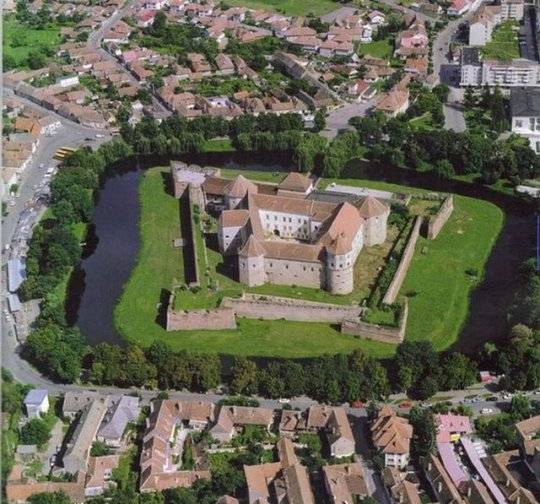
Castle Fagaras - Romania #travel #beautiful #viajes #vacaciones #vacations #photo #peru #Blog #viajeros
0 notes
Photo
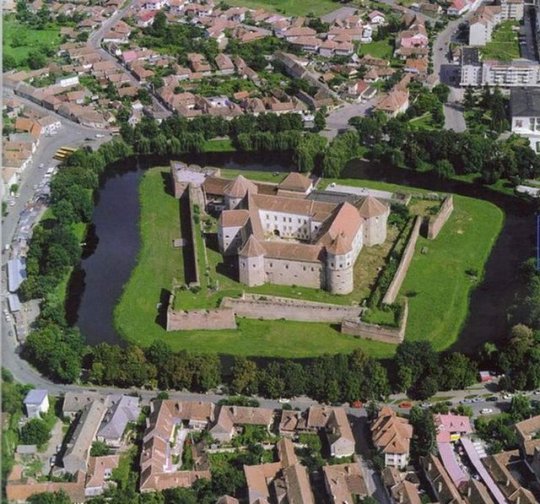
Castle Fagaras - Romania #travel #beautiful #viajes #vacaciones #vacations #photo #peru #Blog #viajeros
0 notes
Photo
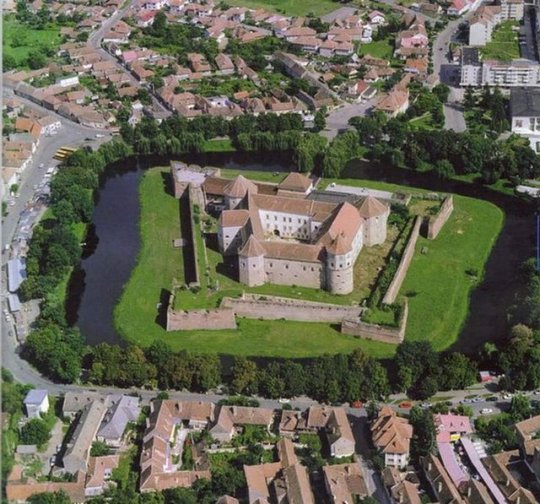
Castle Fagaras - Romania #travel #beautiful #viajes #vacaciones #vacations #photo #peru #Blog #viajeros
0 notes
Photo

Castle Fagaras - Romania #travel #beautiful #viajes #vacaciones #vacations #photo #peru #Blog #viajeros
0 notes
Text
Travel to Făgăraș Fortress, Romania
We #travel to Făgăraș Fortress, #Romania, for #ThursdayDoors with photos of some of its ancient doors, a stolen crown and a secret passage.
#TravelPhotograpy #IB6 .@sa_artists #ThursdayThoughts #castle #history #Secrets
We travel again to Făgăraș Fortress, Romania, sliding down the memory lane for Thursday Doors, after we glimpsed at its Iron Maiden and looked up at some of its wrought iron lanterns.
A (very short) history of Făgăraș Fortress
Făgăraș Fortress blossomed from a 12th century wooden forth surrounded by a simple moat and dirt retaining wall into a stone and brick fortress finessed between the 14th…

View On WordPress
#a short history of Fagaras Fortress#doors of Fagaras castle#fortresses and castles of TransylvaniaRomania#is there a secret passage under Fagaras fortress#Ladislaus (III) Kán and Fagaras fortress#Mihai Viteazul ofere castelul Fagaras cadou#pasajul secret de sub castelul Fagaras#travel to Fagaras CAstle#what to see at Fagaras Fortres#when Ladislaus (III) Kán captures the king of Hungary#who stole the royal crown of Hungary?
0 notes
